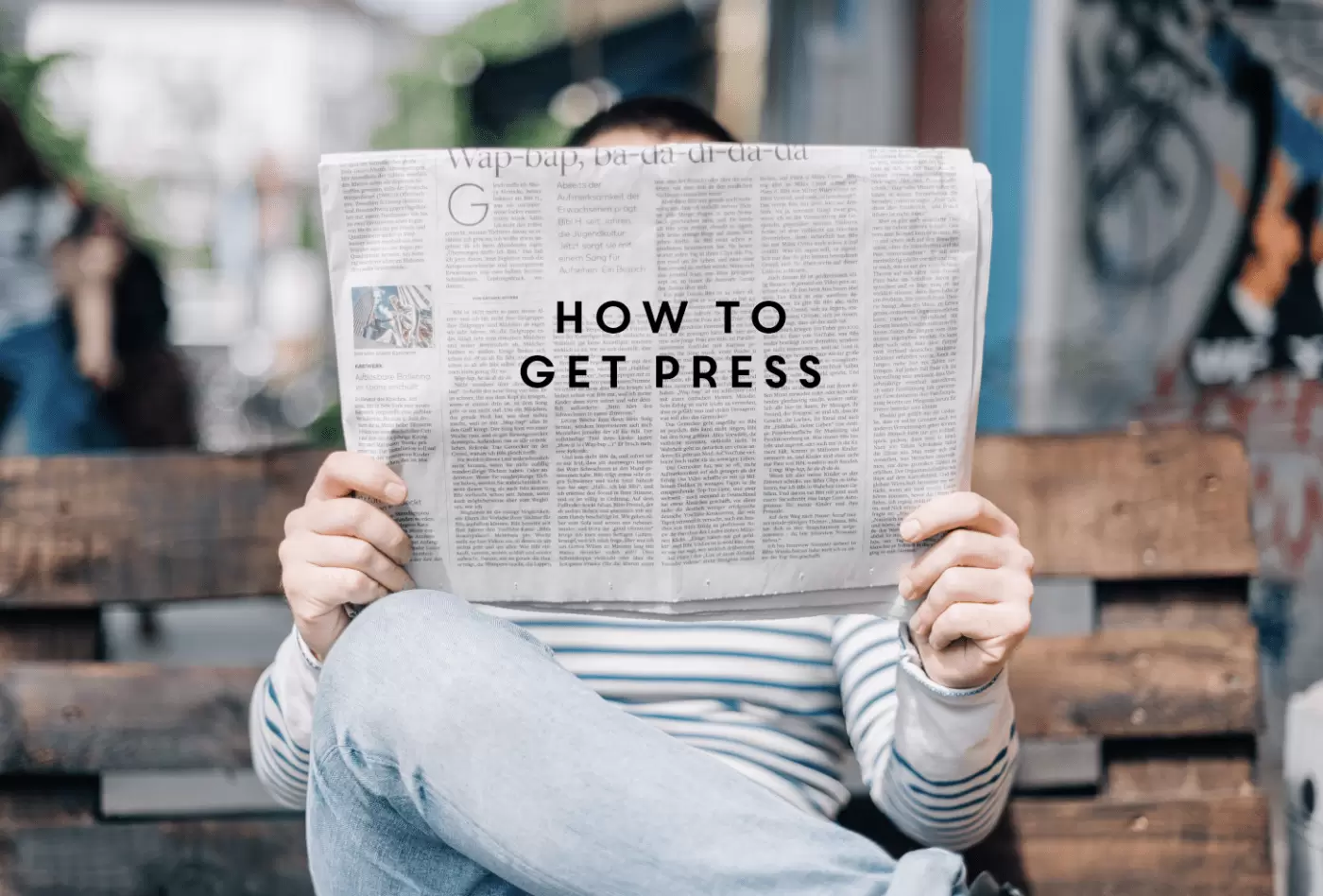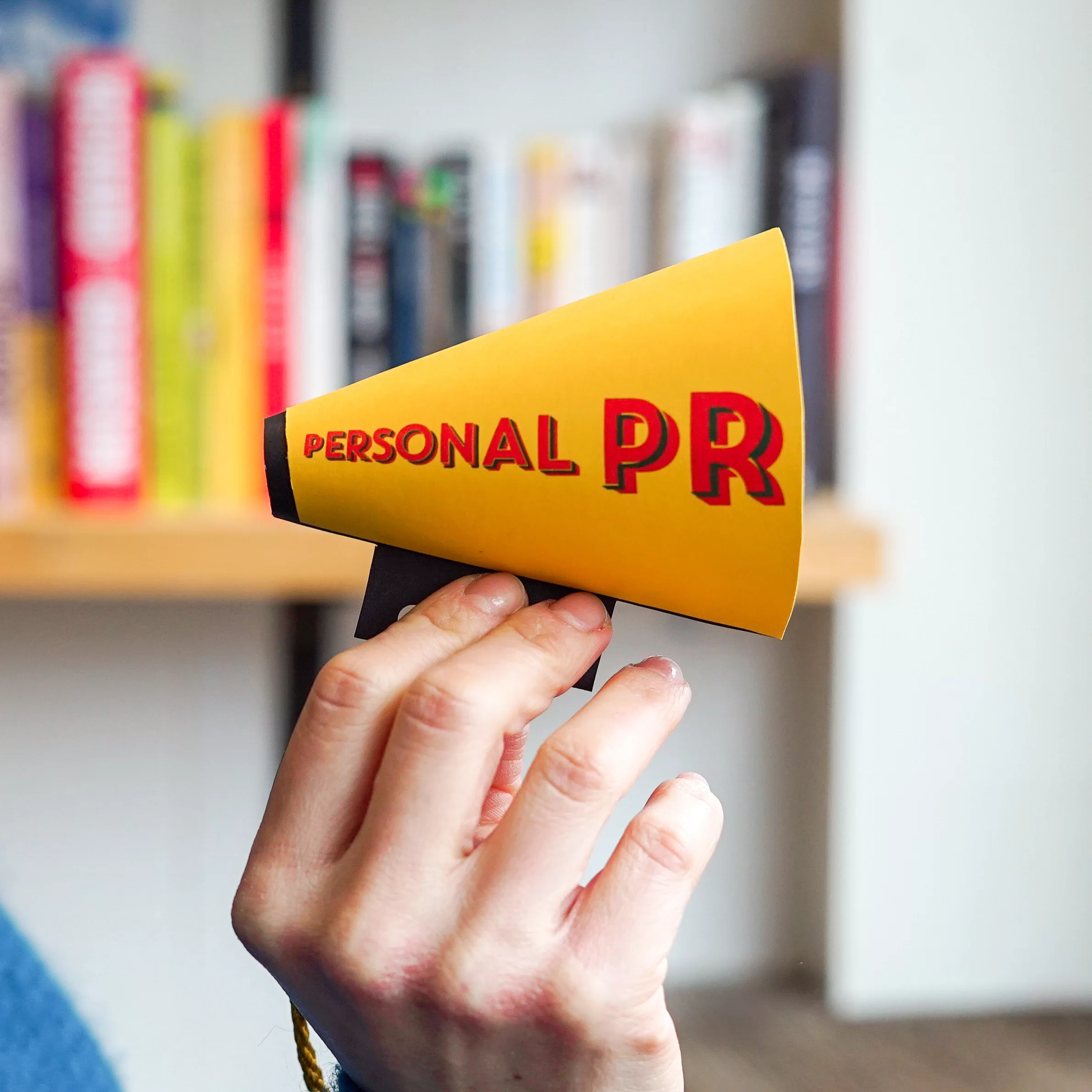Need it for Christmas? Check delivery times

How do I get press coverage for my business?
Marketing & PR
With PR expert, Susie Richardson
UPDATED 23RD AUGUST 2023
How do you get press (or even better, how do you get free press)? We know lots of small businesses struggle with this. So we asked our resident PR expert, Susie Richardson, to give us some insider insight and useful small business advice.
How do I attract media attention? Ways to get press coverage for your business
How do you get press? Well PR (or Public Relations) is about working with the press and building relationships so that they know about you and write nice things about you. Sounds great, but how do you do it? Is there a right way or a wrong way? And is your company too small to be thinking about press and PR right now? Let’s ask Susie…
Susie Richardson has worked with some top brands, from Stella Artois and Belmond Orient Express, to Macmillan Cancer Support. She talked to Holly about why PR is so important and continues to be despite the rapid change in media over the past twenty years. She says…
- PR is not an added extra. It’s not a nice-to-have that you do when you have time or for a big launch. Gaining press is important.
- PR is a slow-burn. It requires that you form and nurture relationships with journalists who will then become your cheerleaders. It’s one of Holly’s mantras — ‘make friends not contacts’ — and that applies here too, so invest in it.
- PR can really help independent businesses. She adds, “Small businesses have got a massive advantage over huge companies who are faceless with no personality. You’ve got the power, so just tell your story and bring it to life.” And she’s right, because so many small businesses have brilliant stories to tell, whether it’s about how you came up with the idea for your product or the beautiful workspace you renovated. Think about what the hook is to your story and lead with that in your press release.
How do I get a journalist’s attention? How to write a press release
Keep it to one page and here’s what to include…
- A succinct summary of who you are
- Details about where you’re from (especially if you’re approaching local press)
- The highlights of what you do or what makes you unique or special
- How you started
- If you have a bigger story to tell – triumphing over adversity or your space becoming a hub for the community for example – make that the focus
- Don’t forget to include your contact details and any social media handles
- Drop in a quote from yourself that gets to the heart of why you do what you do and if possible, a quote from a high profile customer or business associate

Small businesses have got a massive advantage over huge companies who are faceless with no personality. You’ve got the power, so just tell your story and bring it to life.

Think how to use photography to get press interest too
Photography of your products (and where you work if you’re a maker) are vital — see our article on 10 tips for taking good product photographs). The media landscape has changed so much, a lot of magazines are now online-only. We live in a very visual culture so beautiful shots or videos will grab people’s attention much more quickly than words. If you have a friend who’s a photographer or videographer, or you know someone local who’s just starting out, your business shots can be valuable for their portfolio, so they may be prepared to give you a lower rate. Even if you can’t negotiate the price, this is one of those investments that pays off because you’ll use good product shots again and again to attract interest and trade. Plus, It’s very rare nowadays that magazines will send out a photographer so it’s great to be prepared with your own imagery. You’re in control of the content which is a bonus really — you can shoot your business and your product however you want to (though some publications will only accept cut-out style imagery so check).
How do I reach out to journalists? Build relations with the press
The first thing to remember is that journalists are people. Don’t be afraid of them, but don’t be too chummy and casual in your introductions either. Susie recently got an email with the greeting, ‘Hey hun’, which instantly went in the bin. Likewise, avoid cutting and pasting text which can be a giveaway if you fail to personalise the message. If you’ve done all the legwork with your press release, imagery and social media, you’re offering them a story or feature on a plate and you’re much more likely to get a positive response.
Spend time reading through the articles of the journalists who cover the area or niche you fit into. Follow them on Instagram to get to know what they like personally and professionally. If you have things in common, comment. They might follow you back so have your grid ready. Avoid tagging them unnecessarily though. If you don’t have a Twitter account or it’s been languishing for the past 10 years, get back on there. Twitter is where most journalists spend much of their day. More importantly, this is where they make call-outs, usually tagged with #journorequests, so follow along and get clued up on the kinds of things they look for and at what time of year.
How can I get more local press coverage? Find local journalists
For some people whose work relies on the local community or sense of place, local press is really important. It might feel like nobody reads local papers anymore — they do, only it tends to be an older demographic who’ve bought the papers all their life. Find local groups on Instagram and Facebook to see what’s going on in your neighbourhood and find people who may be interested in what you’re doing or selling. Forming a relationship with BBC local radio is also a good route to getting more exposure.
Should you send samples to attract their attention? Many makers put a lot of time, effort and money into their creations so sending out many samples is not practical or economical. It’s much better to get to know maybe five journalists well who you can guarantee will receive the samples and love them (or will return them if they’re for a photo shoot) rather than sending out twenty packages indiscriminately. Once you’ve had a positive response to your photos and press release, and you’ve built up a bit of rapport, mention that you’d love to send a sample and ask where to send it (many journalists work from home even when we’re not in a pandemic).
Twitter is where most journalists spend much of their day. More importantly, this is where they make call-outs, usually tagged with #journorequests, so follow along and get clued up on the kinds of things they look for and at what time of year.
How do I create a press strategy? From press calendars to lead times
You need to create a PR calendar that includes everything you do like seasonal collections, limited edition launches, online shop restocks if you make a limited number of pieces, or items that tie in with big national events or holidays. For example, if you’re a milliner, you might have Royal Ascot in your calendar. Use this to plan ahead and schedule when you approach journalists or pitch stories with a tailored message accordingly. When you send items out or invitations to an open studio or a press launch, make them as beautiful and personalised as possible — everyone loves to receive something thoughtful and memorable.
A lead time is the time it takes for a publication to collate material for a particular issue or article. For monthly magazines this is usually three months. But Christmas planning usually happens six months in advance. Weekly magazines and newspaper supplements have shorter lead times as do TV and radio. So factor this in if you’re pitching for a feature or a mention of a limited edition or seasonal item.
How to get press: key takeaways…
Feeling inspired? Wherever you are in your business journey, whether you’re pre-launch, just starting out or well established, now’s the time to increase your PR efforts and focus on gaining press. Susie’s tips are…
1. Remember PR is not a nice-to-have:
It’s important so invest in it. We have other business advice articles on this if it helps.
2. Writing a good press release is easy if you know how:
Keep it short, include photography or videos as well as the key information to engage them.
3. Journalists are people:
Be respectful, thoughtful and take time to build proper relationships. This helps when sending samples, too.
4. Find journalists in your local area:
People still read local news.
5. Create a solid, year-round press strategy:
This will help you plan ahead. Good luck!

Do Story + Notebook
THE DO BOOK CO
Related content
more articles on marketing & pr
Be the first to know
Sign up to our emails for brand new small business magic and inspiration. And if you create an account, you’ll also get exclusive product drops, discounts and more from Club Holly & Co, too.

